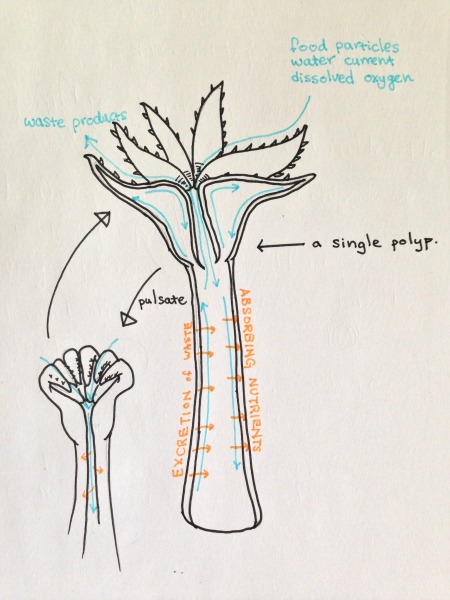Gas exchange and excretion are done through diffusion. Using their tentacles, water current is generated to push water and nutrients into their body to extract dissolved oxygen into the body as well as pick up particles suitable for feeding. Soft corals, like other Cnidarians, produce ammonia which is easily dissolved in water, therefore is diffused out of the body into the gastrocavity cavity, which is then picked up by the water current that is generated in the body (Fox et al., 2004). Pulsation can be seen which can assist with directing water currents and nutrients. However in the Sarcophyton ehrengi species that were studied, pulsation was very rare and most of the time tentacles were wide open.
